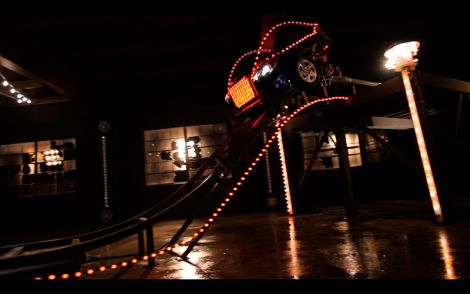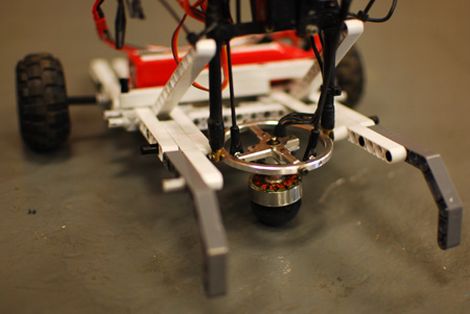
Toyota recently ran an ad campaign touting “Ideas for Good” in which the actors speculated uses for Toyota Synergy Drive hybrid systems in non-automotive related applications. One idea that was floated involved using the car’s regenerative braking system at an amusement park, in an effort to reclaim and use some of a roller coaster’s kinetic energy.
Toyota sent a Prius to the team over at Deeplocal, who deconstructed it and found that the car could generate 60 amps of current when braking. That’s not an insignificant number, so they decided to create a cool demonstration showing how powerful the technology is. They built a coaster car from the Prius’ guts, and positioned it at the top of an elevated platform, which was connected to a 70 foot track. In the video embedded below they push the car from the platform and down the track, using the regenerative braking system to illuminate a large display of amusement park lights.
While the video is little more than a well-produced advertisement for Toyota, we can’t help but think that it’s pretty cool. It’s doubtful that we will suddenly see an inrush of hybrid-based roller coasters any time soon, but the concept is interesting nonetheless.
[via Notcot]
















